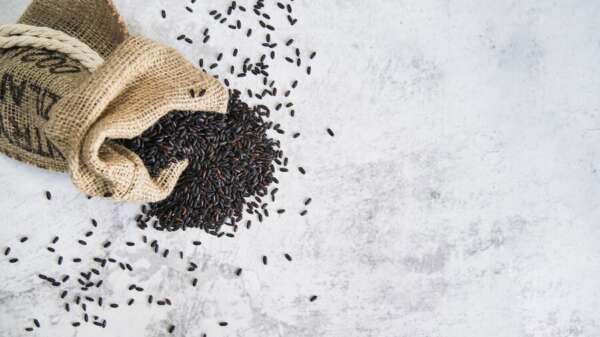Tapioca and sago, often used interchangeably, might sound exotic, but they’re closer than you think! Both stem from the humble cassava root, a starchy tuber native to South America. While tapioca refers to the processed form of cassava starch, sago is the pearl-shaped version often used in dishes like kheer and khichdi. Let’s delve into the fascinating world of tapioca and sago, exploring their health benefits, culinary uses, and interesting facts.
Health Benefits:
- Gluten-free, suitable for those with gluten sensitivities
- High in carbohydrates, providing energy
- Easily digestible, gentle on sensitive stomachs
- May help regulate blood sugar levels
- Good sources of iron, potassium, and magnesium
Culinary Uses:
- Savory dishes: fritters, dumplings, thickeners for soups and stews
- Sweet treats: puddings, kheer, bubble tea, desserts
- Gluten-free baking: flour for cakes, cookies, and breads
Important Facts:
- Cassava Caution: Raw cassava contains naturally occurring toxins that can be harmful if not properly processed. Tapioca and sago, however, are safe to consume as they’ve undergone processing to remove these toxins.
- Variety is Key: Tapioca comes in various forms, from flour and pearls to flakes and chips. Choose the one that best suits your culinary needs.
- Moderation Matters: While tapioca and sago offer health benefits, overconsumption can lead to digestive discomfort due to their high fiber content.
- Sustainability Savvy: Cassava, the source of tapioca and sago, is a drought-resistant and fast-growing crop, making it a sustainable and environmentally friendly food choice.
Tapioca Root, Sago, Sabu Dana: Unveiling Health Benefits, Uses, and Essential Insights
What is Tapioca?
Tapioca, derived from the starchy roots of the cassava plant (Manihot esculenta), is a versatile and gluten-free ingredient. It has been a dietary staple for centuries in various parts of the world, valued for its rich carbohydrate content.
When Did Tapioca Gain Prominence?
Tapioca’s roots in human consumption trace back to ancient times. Indigenous to South America, cassava cultivation and tapioca consumption date as far back as 7,000 years. The crop’s resilience and adaptability led to its spread across the globe.
Where is Tapioca Cultivated?
While cassava is native to South America, tapioca cultivation has expanded to tropical and subtropical regions worldwide. Countries in Asia, Africa, and Latin America are notable producers.
Who Benefits from Tapioca Consumption?
Tapioca caters to diverse dietary needs. It serves as a staple for communities facing challenges like gluten intolerance. Moreover, its neutral flavor makes it adaptable to various culinary styles globally.
Why Choose Tapioca?
- Gluten-Free Alternative: Tapioca provides a gluten-free option for those with celiac disease or gluten sensitivity.
- Energy Source: Abundant in carbohydrates, tapioca offers a quick and sustainable energy source.
- Versatile Culinary Use: From puddings and bubble teas to thickeners in soups and sauces, tapioca’s versatility enhances culinary experiences.
Which Forms Does Tapioca Take?
- Pearls or Sago: Tapioca pearls, also known as sago, are popular in desserts and beverages.
- Flour: Tapioca flour, derived from the root, acts as an excellent thickening agent in various recipes.
- Starch: Tapioca starch, another common form, finds application in gluten-free baking and as a thickener.
Whose Dietary Preferences Does Tapioca Suit?
Tapioca aligns with various dietary preferences:
- Gluten-Free Diets: Ideal for those with gluten sensitivity or celiac disease.
- Vegetarian and Vegan Diets: As a plant-based product, tapioca is suitable for vegetarian and vegan lifestyles.
Incorporating tapioca into your diet offers not only nutritional benefits but also culinary excitement. From delightful desserts to practical thickeners, tapioca proves its worth in diverse ways. Understanding its origins, applications, and nutritional value empowers individuals to make informed dietary choices.
Additional Tips:
- Soak tapioca pearls before cooking
- Experiment with different flavors and spices
- Enjoy in moderation as part of a balanced diet
Conclusion:
Tapioca and sago, once humble ingredients, have emerged as versatile food treasures with a multitude of health benefits and culinary applications. From gluten-free baking to energy-boosting snacks, these little pearls offer a delightful way to embrace healthy and delicious eating. So, unlock the secrets of tapioca and sago, and let your culinary creativity flow!
Additional Tips:
- When cooking with tapioca pearls, always soak them first to prevent clumping and ensure proper texture.
- Experiment with different flavors and spices to infuse your tapioca and sago dishes with unique personalities.
- Remember, portion control is key – enjoy tapioca and sago in moderation as part of a balanced diet.
With a little exploration, you can unlock a world of culinary possibilities and reap the health benefits that tapioca and sago have to offer. So, go forth and embrace the versatility of this humble root turned superfood!



